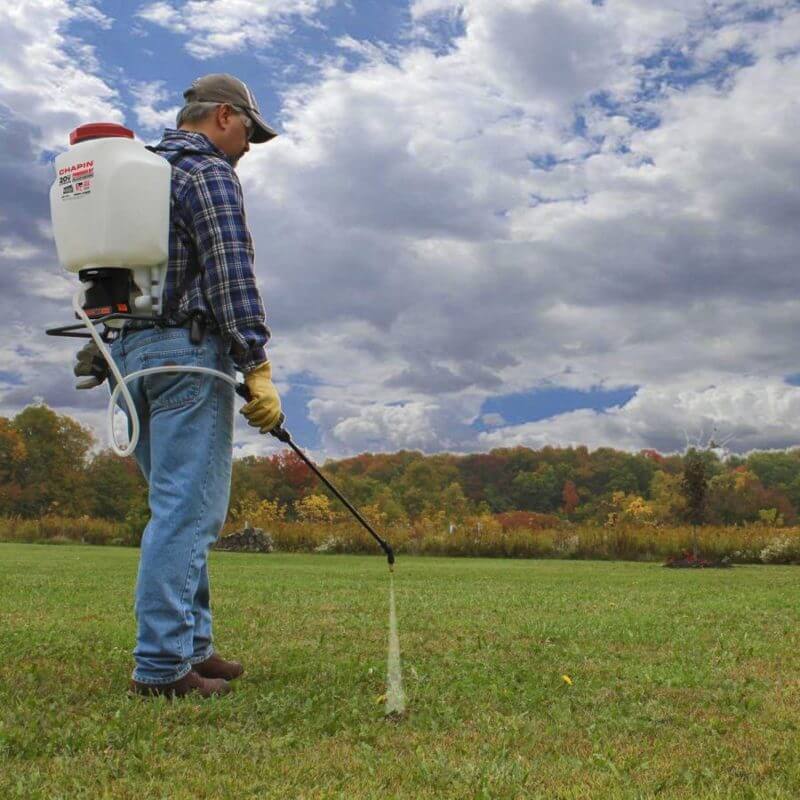How To Keep Your Children Safe After A Lawn Spray

When you are taking care of a large piece of property or if you just want your lawn to look as good as possible, you might invest in a lawn-spraying service that will spray pesticide on the lawn to keep weeds from growing and to avoid having bugs devour it. However, you are spraying chemicals on the lawn when you do this. If you have children, chances are good that they might be affected by the spraying if you do not take preventative action. Here are some tips for keeping your children safe during the lawn spraying process.
1. Don’t Allow Anyone Outside While the Lawn is Being Sprayed
First, you are going to want to avoid having any of your children outside while the lawn is being sprayed and for a few hours after the spray has been applied. The easiest way to do this is to have your children physically away from the house because they might get bored while inside the house and be more likely to try to convince you to let them play outside. Have the spraying done while your children are at school or while you are taking them to the mall or other location. Give the lawn a few hours to dry out and for the pesticide to settle before you allow anyone near the lawn.
2. Don’t Let Anyone Step on the Lawn Until It Has Rained
Next, you are going to want to instruct your children to avoid stepping on the lawn until it has rained or until you have watered the grass. This is because a lot of the pesticide from the spraying is still on the surface of the lawn. If your children run around on the lawn, the pesticide will get on their shoes and they will track it inside the house where it can be a danger to children and pets alike. Stock your garage with bikes, sidewalk chalk, and scooters that need to be used on the sidewalk. Once you water the lawn, any excess pesticide will be neutralized or removed and the lawn will be safe to play on again.
3. Have Your Children Change Clothes if They Accidentally Go on the Lawn
Finally, you are going to want to make sure that your children change their clothes if they go on the lawn too soon. This will minimize their overall exposure to the pesticides and ensure that they remain healthy.
For more information, talk to a company that specializes in lawn-spraying services. They will be able to recommend particular sprays that are not harmful to children.
Designing the English Cottage Garden
The English or cottage garden is a style that conjures up a flower-filled landscape bursting with color. Although this theme is most easily achieved in areas where rains are common and dappled shade offers comfort for typical cottage garden plants, you can create the same effects using plants that are ecologically friendly to your native environment.
One of the best ways to design an English cottage garden is to frame your garden with hardscapes and décor that will punch up the theme. Use a white picket fence or a white wooden arbor to outline your garden. Wrought iron can also blend in well with an English cottage garden. Paths and walls of used brick can help create the cozy look of comfortable age. And outfitting the garden with cottage styled benches or a romantic swing can make your garden all the more inviting,
The typical English cottage garden sports hollyhocks, sweetpeas, delphiniums, peonies, hollyhocks, roses and more. If these plants will do well in your environment, fill your garden with them. There are many other plants that will look great with this theme.
There are varieties of roses that do well in almost all garden areas. You can scramble them up trellises or over arches or even design in a rose garden devoted exclusively to these flowers.
If your area is not ideal for growing the classic English cottage garden plants, look for plants that grow well in your area but have similar habits of growth. For example, instead of delphiniums and foxgloves, try growing mullein or columbines. Look for varieties of columbine or other large families that might offer individual plants that grow in variable conditions. Use annuals and bulbs that are likely to do fine in many more areas. Stock will add perfume while pansies and snapdragons will fit in perfectly and annuals can be used in the growing season of most any climate. Bulbs like ranunculus, tulips, daffodils, freesia and more always look right at home in a cottage garden.
Create gardens that are not formal and symmetrical. Plant flowers and shrubs to create a full look. A little random wildness will look just fine in a cottage garden. Too much planning and control will destroy the relaxed look of a successful English cottage garden. Then add ornamentation like a bird bath or a set of garden chimes as a finishing touch.
© Copyright Patio and Lawn Care